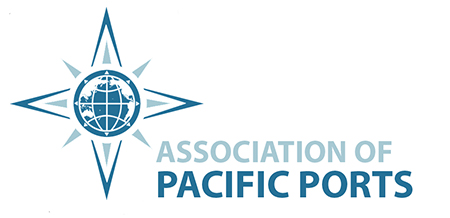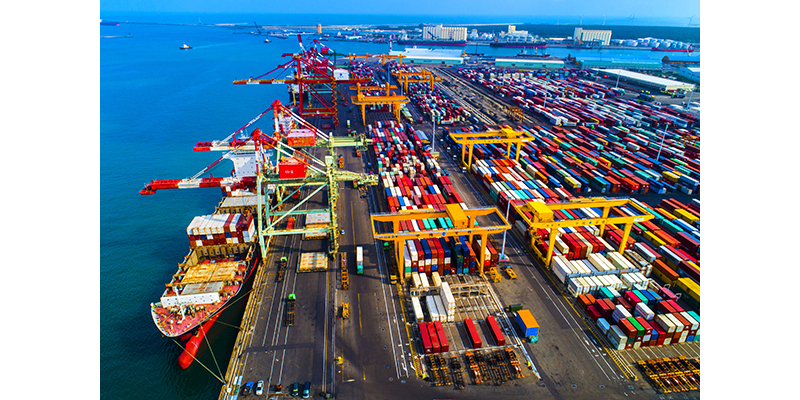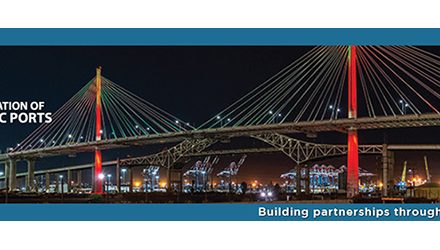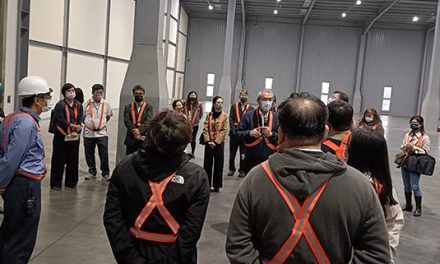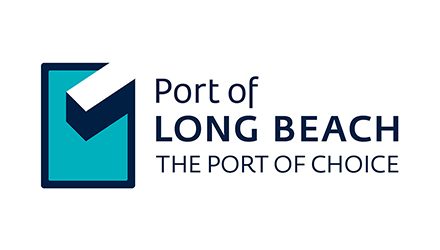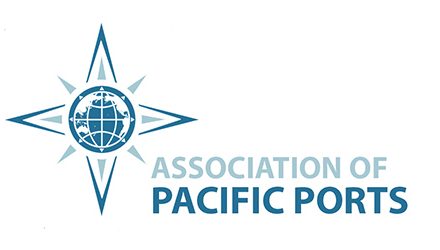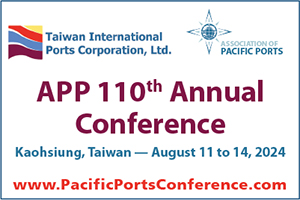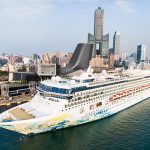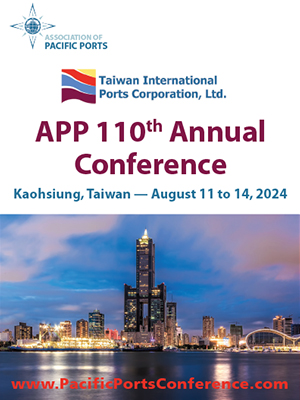From the January issue of Pacific Ports Magazine…
Prevention is the best medicine, as the old saying goes. And for Taiwan, who had experienced the rapid spread of SARS during the 2003 outbreak, the lesson was one they did not wish to repeat. The steps taken by the Taiwan government in 2004 and the years following have been key to Taiwan’s current success in keeping COVID-19 at bay. With great assistance from Ann Wu, Taiwan International Ports Corporation, Ltd. (TIPC), and Chaio Ying Chen, Maritime and Port Bureau (MPB), APP learns how that preparation allowed Taiwan’s international ports to keep this most recent pandemic from affecting operations.
Following the 2003 outbreak, the Taiwan government established the National Health Command Center (NHCC) as part of a disaster management center to focus on outbreak response and act as the operational command point for direct communications among central, regional, and local authorities. The NHCC unified command system included the Central Epidemic Command Center, the Bio-logical Pathogen Disaster Command Center, the Counter-Bioterrorism Com-mand Center, and the Central Medical Emergency Operations Center.
Specifically related to port management, again, preparation and anticipation have provided for a successful long-term strategy. In 2011, the Taiwan government began carrying out the International Health Regulations (IHR) Designated Port Core Capacity Plan. Designated ports under this project included Keelung Port, Taichung Port, and Kaohsiung Port. A cross-agency task force was formed to integrate resources effectively.
In response to the changing circumstances of the international public health crisis, initiatives undertaken included upgrades to port facilities and infrastructure, port employee training, and regular exercises to strengthen various core capabilities. In doing so, MPB was able to ensure that relevant personnel operating in the port had the emergency response capabilities required when encountering sudden public health risks. In addition, MPB ensured they were following and complying with international standards to enhance overall port safety.
The Taiwan Centers for Disease Control (CDC), Ministry of Health and Welfare, announced the establishment of the Central Epidemic Command Center in response to the COVID-19 epidemic on January 20, 2020. The Central Epidemic Command Center serves the purpose of integrating various ministries’ resources (including the Ministry of Transportation and Communications) and manpower to prevent the spread of COVID-19 and ensure the nation’s public and safety.
At the beginning of the epidemic outbreak in March, MPB sent a written notification to the shipping industry outlining epidemic prevention measures for crew. Examples of measures included restrictions on disembarkation, limited to actual operational needs, when a ship is berthed at a port in the third-level warning area of the epidemic; records must also be kept on embarkation and disembarkation of crew members; and crew members were required to wear masks and gloves during the period when the ship is berthing. Crew member temperatures were also required to be measured twice a day with well-kept records during the voyage.
MPB and TIPC have been successful in keeping the virus away from Taiwan ports with no cases found in any of the four ports in Taiwan. According to the Regulations Governing Quarantine at Ports, foreign ships entering Taiwan’s international ports must notify the quarantine unit and apply for a quarantine review.
In short, the rules are as follows: “The captain shall notify the quarantine unit of the health condition of crew members on board and the hygienic condition of the ship 4 hours to 72 hours in advance prior to arriving at the port.”
According to the Regulations, the maritime health declaration (the captain and the ship’s doctor are required to record the status of the crew during the voyage), port-of-call list, ship health certificate and other necessary quarantine information should be submitted to the port quarantine unit by the ship’s agent when applying for entry into the port.
If the quarantine unit receives information such as a suspicious disease on the ship, they will board the ship to perform quarantine operations such as assessing the ship’s environment and crew conditions, or activating the medical evacuation mechanism, if necessary.
If MPB staff conduct Port State Control Inspection or TIPC staff receive information about a suspicious disease when conducting inspections via Vessel Traffic Services, they immediately notify the quarantine unit to board the ship for inspection to be able to effectively prevent the spread and avoid the commercial port becoming prone to the epidemic.
Turning our attention to efforts to guard against the virus being transmitted between port staff, MPB noted that they streamlined some epidemic prevention supplies, pilot prevention actions, and crew and border control measures as follows:
- Epidemic prevention supplies — the government purchased prevention supplies such as eye protection, masks, forehead (ear) thermometers, ethanol, gloves, protective gowns and other anti-epidemic supplies and equipment for ship and container yard staff, and the environmental disinfection is carried out on ships and office areas to ensure prevention of the spread of viruses and reduce the risk of infection.
- Anti-epidemic actions for pilots:
- To strengthen the disease prevention and protection of the pilot, MPB issued a notification on April 7, 2020, to regulate the pilot’s health management and the epidemic prevention of ships entering the port on international routes, and to establish a connection platform and notification mechanism for pilots to guide ship operations. If an international-route ship fails to implement epidemic prevention measures, the pilot may refuse to navigate according to the Piloting Act.
- In addition, in accordance with the decision of the Central Epidemic Command Center, MPB sent a letter to TIPC to broadcast via VHF, asking international-route ships to complete disinfection operations on areas such as bridges and passageways where the pilot might walk through before the pilot boards the ship.
- Crew border control actions:
- MPB published “Operating Principles of Seafarer Epidemic Prevention and Health Control Measures,” and Central Epidemic Command Center published “Guidance on Epidemic Prevention Measures and Crew Health Monitoring for Ships Berthing for COVID-19” which were then sent to shipping companies, shipping agents, and shipping associations for reference.
- The Central Epidemic Command Center issued the “Declaration Form for the Crew’s Health Status” for the ship’s doctor to confirm whether crew members have had COVID-19 related symptoms in the past 14 days. The declaration is attached to the ship’s maritime health declaration and then submitted to the CDC.
- Border control measures:
- Taiwan CDC announced that, starting March 19, 2020, non-citizens were prohibited from entering Taiwan.
- Considering that there is still a need to exchange crew members, the CDC agreed that, starting from April 19, 2020, foreign crew members who serve in Taiwanese-owned national ships, foreign ships belonging to the Taiwanese ship transport industry, or those who come to Taiwan to deliver ships (but not including mainland China ships’ crew), may apply for entry to the National Immigration Agency, Ministry of the Interior after receiving a business contract fulfillment certificate issued by MPB. They must undergo home quarantine (or quarantine at a hotel) for 14 days. This is to assist the shipping company in crew exchanges.
For TIPC staff, similar methods have been employed:
- Following the Port Epidemic Prevention COVID-19 Operation Guidelines.
- Infrared thermometers are installed in the domestic passenger liner travel halls in Keelung, Kaohsiung, Budai, and Magong to detect the temperature of passengers on board. In addition, port staff measure their temperature every day, wear anti-epidemic masks and gloves, and keep a proper distance during operation. Cleaning and sanitization are also carried out before and after passengers leave, ensuring no direct contact with the passengers.
- Office staff also need to measure their temperature, wear masks, and keep a proper distance every day. TIPC has prepared public anti-epidemic materials, and established measures for colleagues to work in different places or from home and have trained staff on duty to respond to emergency situations.
- As the year has progressed, Taiwan ports successfully implemented relevant measures against COVID-19 by following government policy and allowing port operations to maintain stability, but the pandemic abroad still had impacts on throughput.
Regarding container business, the main factor affecting Taiwan’s port volumes in 2020 was the pandemic. Given that Keelung port and Taichung port are comprised largely of Taiwan-China shipping routes, volumes dropped in Q1 due to the production halt that came with the lock downs in China but recovered gradually in Q2 and have remained stable ever since. On the other hand, Kaohsiung port, comprised mainly of ocean-going ships, was affected by shipping alliance carriers that had implemented blank sailings and shrinking slots since Q2 and was further worsened by port congestion in Europe and America as well as equipment and labor shortages.
As to passenger business, the Taiwan government has banned international and Taiwan-China cruises calling at Taiwan ports since February. Though the government gave special permission to the Explorer Dream cruise ship to operate island-hopping business in Taiwan, the number of passengers dropped significantly.
Looking forward, TIPC estimates that the Ports of Keelung, Taipei and Taichung would not see much of a difference and would remain stable over the next six months. Cargo is expected to rebound for the Port of Kaohsiung given that route reduction and blank sailings will slow down.
In the meantime, TIPC will keep implementing continuous capability upgrades, optimizing safety and efficiency, and fulfilling port environmental protection to ensure sustainable growth for all TIPC port operations.
Both MPB and TIPC have gained great knowledge over the past year on managing port operations during a pandemic.
MPB, noting that, while the world is still being ravaged by COVID-19, Taiwan has been able to minimize the impact through quick and effective response and control.
Eight key factors contributed to Taiwan’s success in its epidemic prevention: their previous SARS experience; the establishment of the Central Epidemic Command Center; information transparency; good resource allocation; timely border control; smart community transmission prevention; advanced medical technology; and the high participation of citizens.
The success of Taiwan’s epidemic prevention depends on all epidemic prevention strategies formulated by central and local governments, and concerted efforts to fight the virus made by of its high-quality people. Apart from that, Taiwan’s long-term efforts in the medical and health field in the past have established an excellent health and medical foundation to implement epidemic prevention measures effectively and quickly.
The MPB’s role in Taiwan’s epidemic prevention work focused on cross-border control. Through the cooperation platform set by the Central Epidemic Command Center, transparent communications among industry, government, and academia have been well established. As such, they have been able to acquire timely epidemic prevention information and policy instructions, which may appropriately apply to quarantine operations in ports.
Comparing Taiwan’s response to that of the international situation, Taiwan adopted epidemic preparedness and prevention measures well in advance. The epidemic prevention measures not only respond to the current situation quickly, but also provides for plans at all stages, such as taking the lead in border control actions, fully supplying epidemic prevention materials, and using technology to reduce people’s contact. With that, MPB has effectively reduced the impact of the epidemic.
TIPC also noted that acting in advance was critical to their success. Effective initiatives included VTS broadcasts every hour through AIS text to inbound ships and the crew members to report health problems; the use of multiple facilities and equipment (such as multimedia billboards, marquees, posters, etc.) to strengthen the health education and guidance for passengers on domestic ships and port operators; and the sufficient supply of anti-epidemic materials and the installation of infrared thermometers.
TIPC also noted that the Port Epidemic Prevention COVID-19 Operation Guidelines and practical epidemic prevention guidelines that were established, along with related measures in port areas being adjusted in due course, have allowed for port operations to be carried out smoothly.
